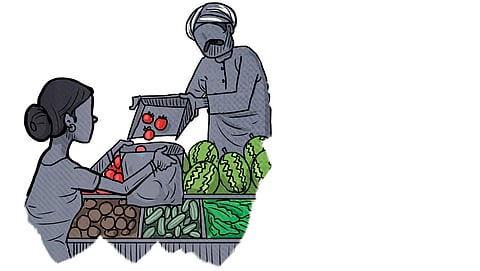Food, decoded
GROUP 1: UNPROCESSED OR MINIMALLY PROCESSED FOODS
Whole foods like fruits, vegetables, pulses and meat found in their raw form. May be minimally processed by removal of inedible or unwanted parts, drying, powdering freezing or roasting. Typically cooked as dishes or meals in home kitchens, restaurants or canteens.
GROUP 2: PROCESSED CULINARY INGREDIENTS
Oils, butter, lard, sugar and salt derived from Group 1 foods or nature through pressing, refining, grinding, milling, drying. Rarely consumed by themselves, used in combination with other foods to create palatable meals.
GROUP 3: PROCESSED FOODS
Canned or bottled vegetables or legumes preserved in brine; whole fruit preserved in syrup; tinned fish preserved in oil; processed meat like ham, bacon, pastrami, smoked fish; freshly baked bread and simple cheeses with added salt. These have added salt for flavour and preservation. They are typically eaten as part of meals, either directly or with minimal preparation.
GROUP 4: ULTRA-PROCESSED FOODS
Carbonated soft drinks; packaged candies, biscuits, cake mixes, ice cream and chips; artificially sweetened yogurt and breakfast cereal; pre-prepared meat, cheese, dough and their products; powdered and packaged foods; baby formula. Made industrially using Group 2 foods, additives and preservatives not common in culinary use. Often contain little to no fresh foods and are designed to mimic or mask natural foods. Typically, ready-to-eat/heat with minimal or no preparation needed.
This infographic was originally published in the cover story Built to binge in the October 16-31, 2025 print edition of Down To Earth

